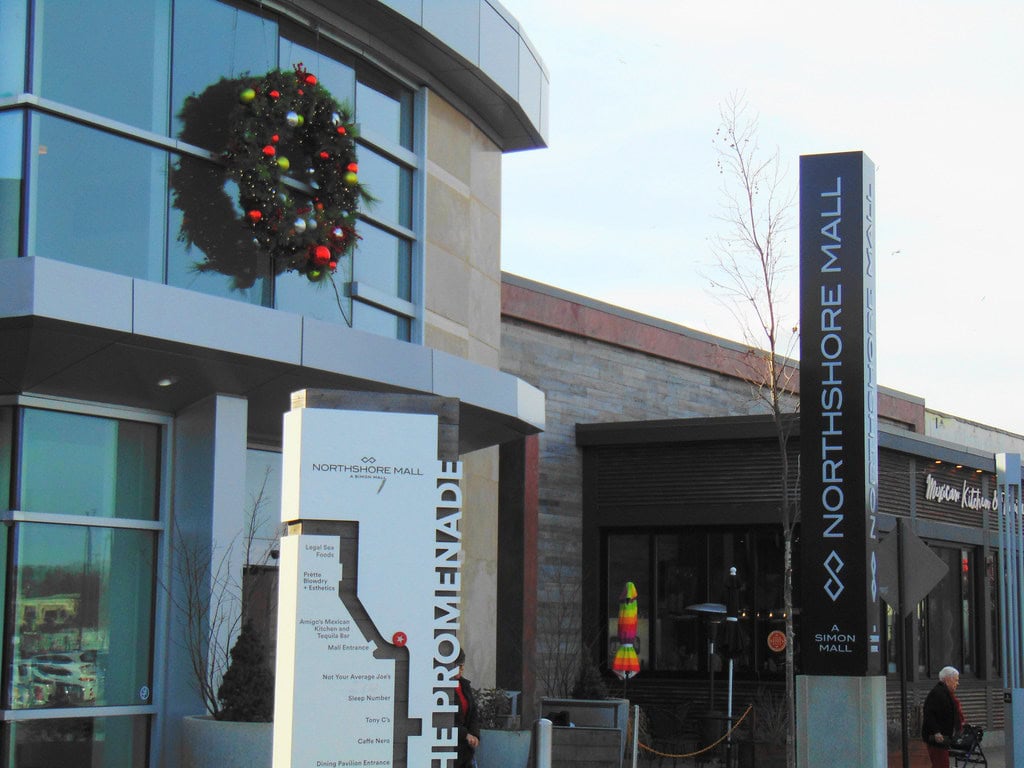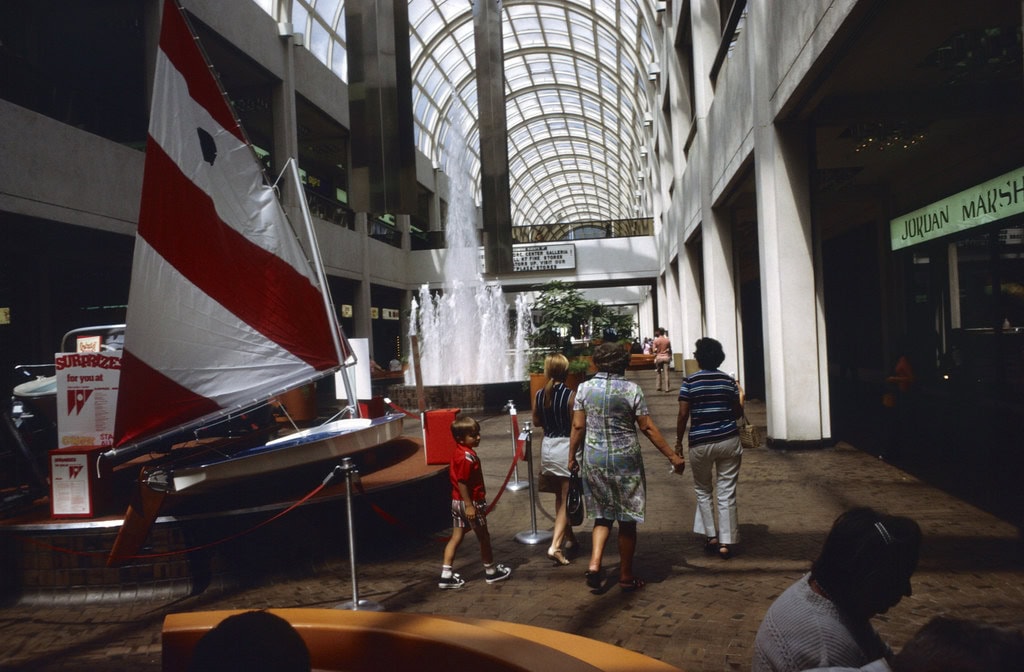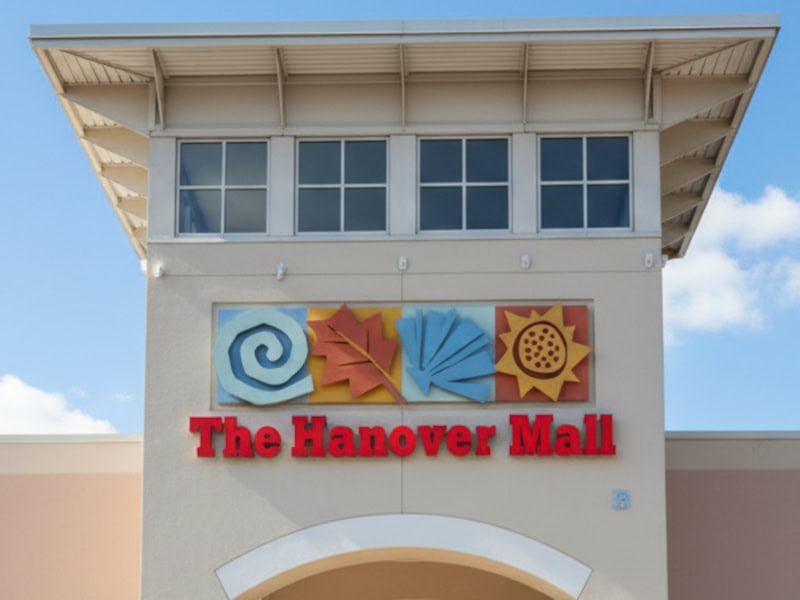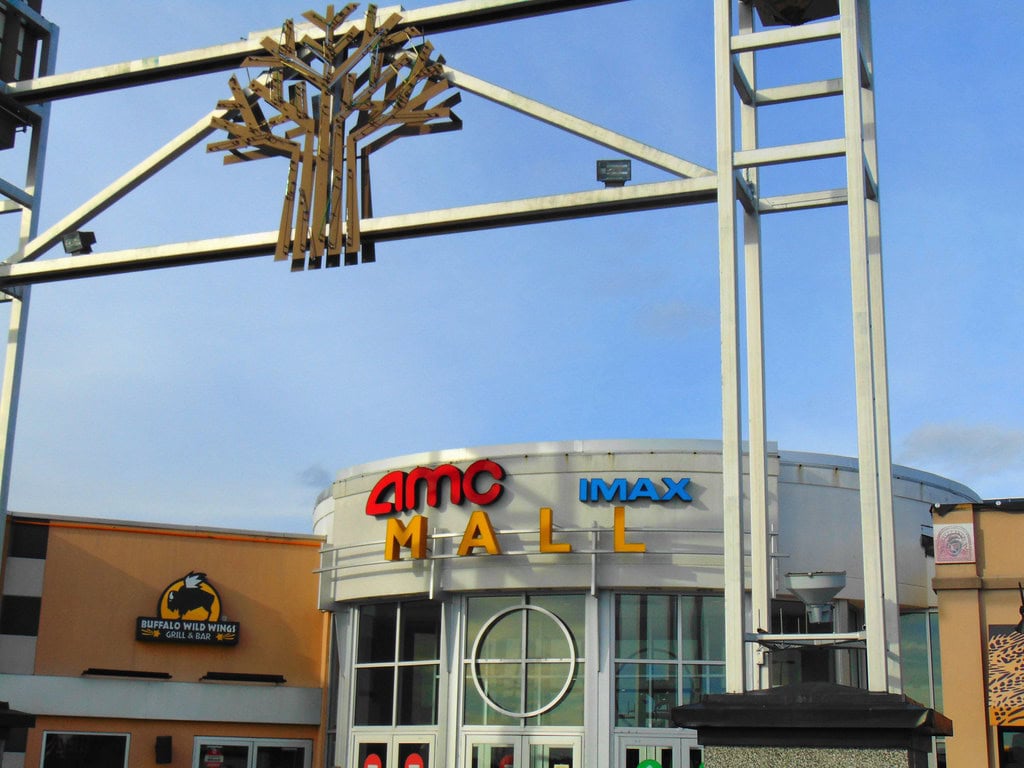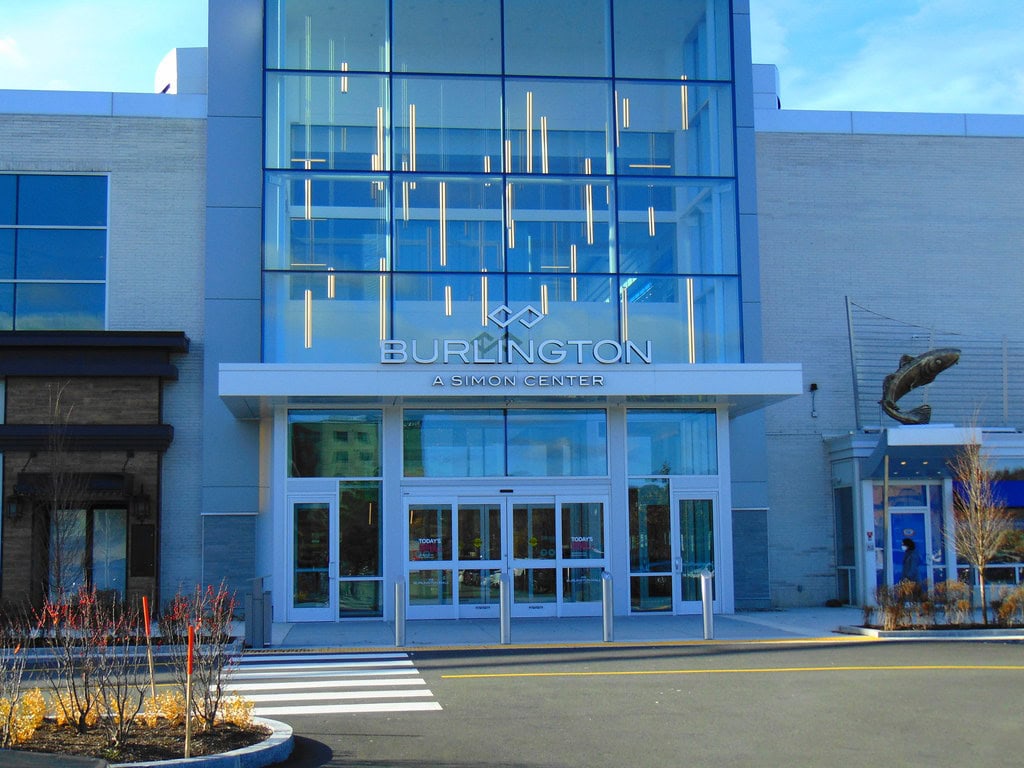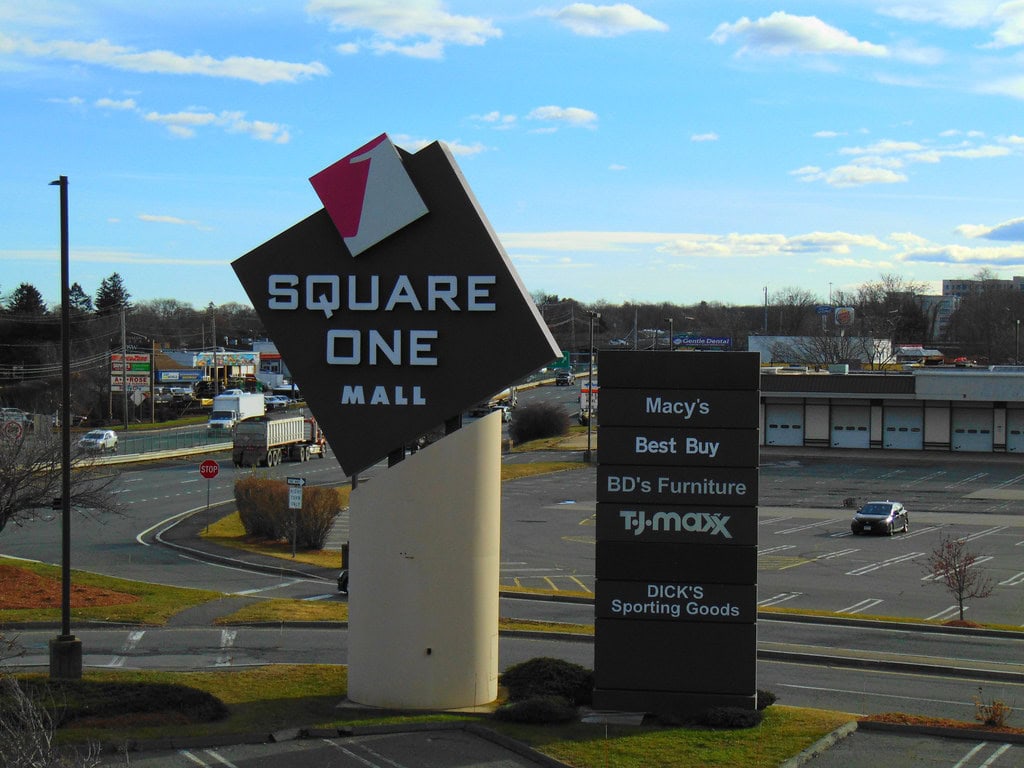The Center That Boston Built Around
For people who've walked through it half their lives, the Prudential Center doesn't need a reintroduction. The mall's always had a kind of everyday permanence, easy to pass through, easy to overlook. But underneath the new fitness centers, fashion rollouts, and seasonal lighting shows, there's a sixty-year thread running straight through.
This place didn't just appear. It was filled in, carved out, built up, torn down, and retrofitted, sometimes with vision, sometimes just out of need. What started as a patch of marshland and railyard became an anchor in a city that keeps shifting around it.
If you're looking for things to do in Boston, MA, the Pru still makes the list, though what you'll find there now looks very little like what stood here in 1964.
Land Deals and Load-Bearing History
The ground the Prudential Center stands on wasn't meant to hold a tower, let alone four.
Boston's Back Bay was marshland until it was filled and leveled for railyards.
That industrial footprint shaped the site's flat, open blocks - space Prudential Insurance Company took over in the early 1960s for its first tower project.
The Prudential Tower opened in 1964. Its height, 52 stories, made it the second-tallest building in the country at the time.
But the early development didn't go much further.
Around the base, there was a small shopping arcade with a Saks department store and a few other tenants.
The rest of the plaza was paved, wide, and wind-whipped, surrounded by scattered buildings like the Sheraton and 101 Huntington Avenue.
The open layout made pedestrian flow difficult and gave the area a kind of in-between quality.
That plaza also hosted a 27-foot bronze sculpture called Quest Eternal, installed in 1967.
Cast in one piece, it stood there for nearly fifty years, stretching skyward from the center of a city trying to grow vertically.
The Christmas tree from Nova Scotia stood nearby each winter from 1971 to 2002 before moving to Boston Common.
It was a different kind of anchor than, more space than structure, more concept than center.
Retail Strategy and the Concourse Bet
By 1991, what had begun as a prestige office site wasn't working as a public space.
The plazas were disconnected. Foot traffic thinned between buildings. So, the plan shifted.
Rather than add height, the developers, led by the Hahn Company and backed by Prudential Insurance, looked inward.
The idea was to link the towers through a single enclosed shopping center, using the existing footprint bordered by Boylston, Huntington, and Dalton.
The project came in at $100 million and took over two years.
What emerged in 1993 wasn't just new retail, it was new flow.
The buildings that had once stood apart now shared a pedestrian spine, one that stayed busy through snowstorms, lunch breaks, and convention spillovers.
The old plaza got pulled into this grid. New entry points handled crowds from multiple transit lines.
Retail leasing leaned toward known anchors and adaptable square footage, Saks remained, and others followed.
It worked. Not in a showy way, but in that way, footfall numbers started to rise, and weekday foot traffic smoothed out.
The concourse turned the old separation into commercial proximity.
That was the bet. Less iconic, more occupied. By the mid-1990s, the Prudential Center wasn't a cluster of buildings anymore, it was a shared address.
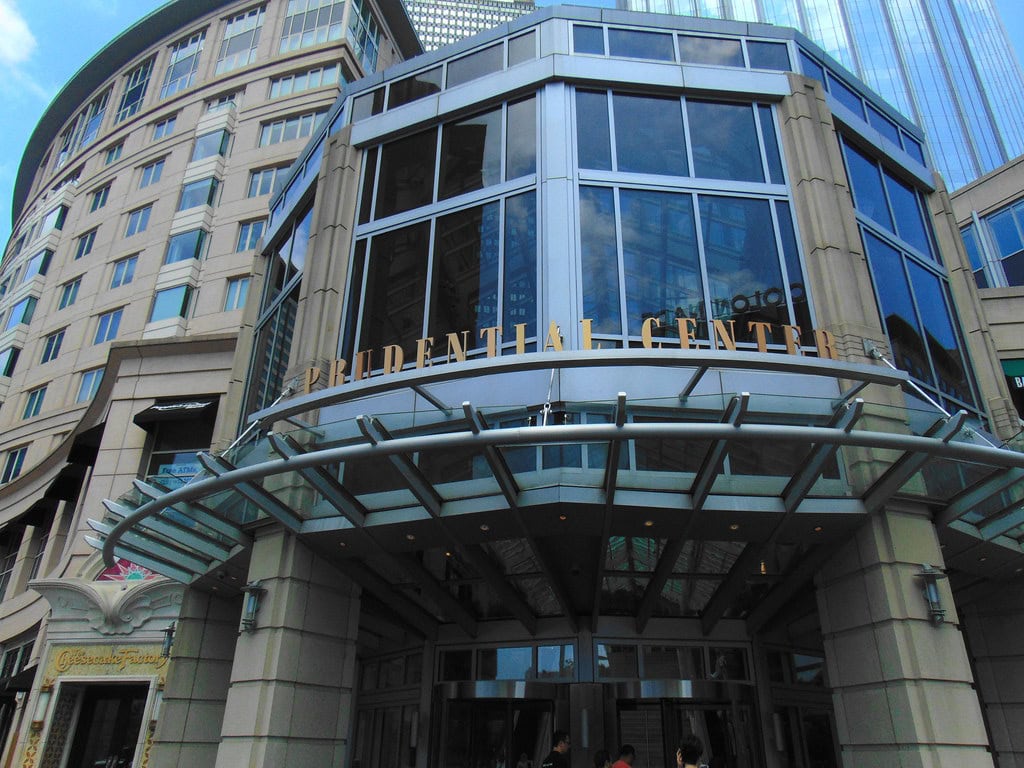
Leasing Turns and Brand Shifts
Retail anchors don't stay put forever.
In August 2020, Lord & Taylor announced it would close its location at the Prudential Center, part of a larger wind-down across the country.
That left one of the larger retail footprints in the mall open, valuable space, but hard to reassign without a national tenant.
By June 2022, Boston Properties was in final negotiations with Dick's Sporting Goods to take over the site with their House of Sports concept.
Dick's Sporting Goods opened its first Massachusetts-based House of Sport at the Prudential Center on April 19, 2024.
The store serves as a hybrid retail and activity center, testing a layout that blends sales with indoor turf, gear trials, and brand programming.
The Prudential Center didn't stand still while this lease was shuffled.
Saks Fifth Avenue remained in place as an anchor, joined by high-end stores like Club Monaco, Ralph Lauren, and Aritzia.
The Eataly location, which opened in November 2016, took over a former food court and changed the lunch and dinner landscape for shoppers and office workers alike.
About 50 specialty retailers operated inside the complex, flanked by dining options ranging from quick counter service to seated restaurants like Earl's and Wagamama.
Public Art, Property Use, and Reallocation
Art wasn't ever the main draw, but it played a role in the center's atmosphere.
The original bronze sculpture Quest Eternal stood on the paved plaza for nearly five decades, stretching 27 feet into the air.
Installed in 1967 and weighing five tons, it had become part of the site's visual memory, even as the layout around it changed.
By 2014, the plaza was gone, replaced by a new entrance structure designed to handle increasing foot traffic.
That move meant Quest Eternal had to go. It wasn't destroyed, just displaced.
Boston Properties kept it in storage until 2019 when the Boston City Council agreed to accept the statue and place it in Smith Playground near Western Avenue and North Harvard Street.
Inside the center, smaller-scale public art remained.
Temporary installations rotated through the concourse.
Retailers worked displays in open spaces. Starting in December 2009, a new visual tradition took hold: the "31 Nights of Light" program.
Every evening in December, the top of the Prudential Tower lit up in different colors to represent local nonprofits and causes.
In 2024, that tradition marked its 16th year.
It wasn't tied to foot traffic, sales, or commercial leases, but it gave the building presence at the end of the year.
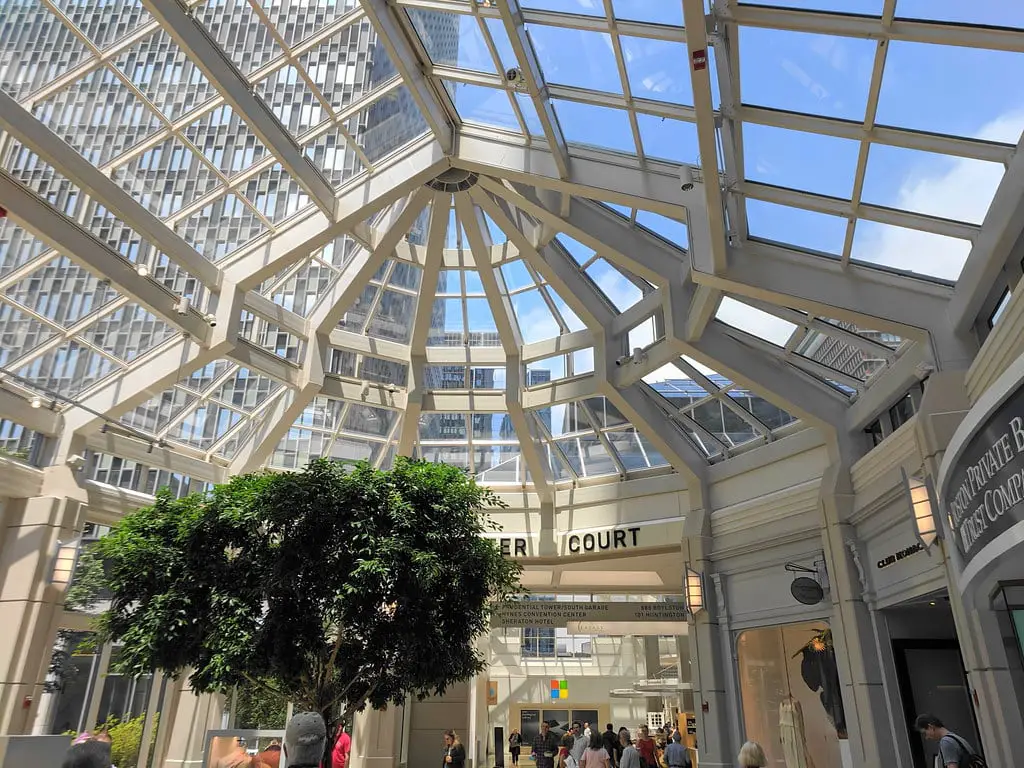
Leaseholders in Worship and Renovation
There's a chapel tucked inside the mall. Not near it, in it.
St. Francis Chapel first opened on November 11, 1969, built by the Thomas O'Connor Company and designed by Brother Cajetan Baumann.
It sat in the older section of the center and drew a mixed crowd from the start.
The Franciscans ran it until June 1, 1983, then handed it off to the Oblates of the Virgin Mary.
The original space closed in 1986 due to construction, and the chapel reopened in a new location near the entrance to the Hynes Convention Center.
The re-dedication took place on April 28, 1993.
The current space functions daily. It offers three Masses, confessions, Eucharistic adoration, and a small gift shop.
In 2025, renovations were overdue, eighteen years since the last paint job.
The walls behind the votive candles were smoky from years of prayers and flame.
The updates cost $40,000. The chapel now sees between 1,500 and 2,000 visitors each week, including students from nearby colleges.
Some show up regularly. Others wander in after long absences, often just looking for a quiet space to sit down.
Leaseholders might change upstairs, but the chapels stayed mostly the same.
Its lease has outlasted more than a few storefronts.
Fitness Leasing and Market Footprint Expansion
One bookstore is out, and one health club is in.
When Barnes & Noble closed its Prudential Center location, it left a highly visible retail space vacant.
In April 2024, Life Time signed on to take that spot, marking their seventh facility in the Boston area.
The concept isn't limited to fitness.
It's designed as a 59,000-square-foot all-in-one buildout, combining physical training with spa services, co-working desks, and a branded cafe.
This particular location is scheduled to open in late 2025.
Floor plans call for multiple group class studios, a large area for functional training, and three branded zones: Alpha, GTX, and Ultra Fit.
The spa section includes steam rooms, saunas, a whirlpool, and a cold plunge.
A LifeCafe will offer food and drink, geared toward members but open to the public.
Upstairs, Life Time Work will bring in a flexible workspace designed to match the aesthetic of their gym areas.
The lease fills a large retail footprint with a service model aimed at repeat visits.
It replaces a space that had one revenue path with one that has several.
No seasonal clearance racks. No backlist bestsellers. Instead, daily routines include treadmills, meetings, and protein smoothies.
That's how they're planning to hold the square footage.
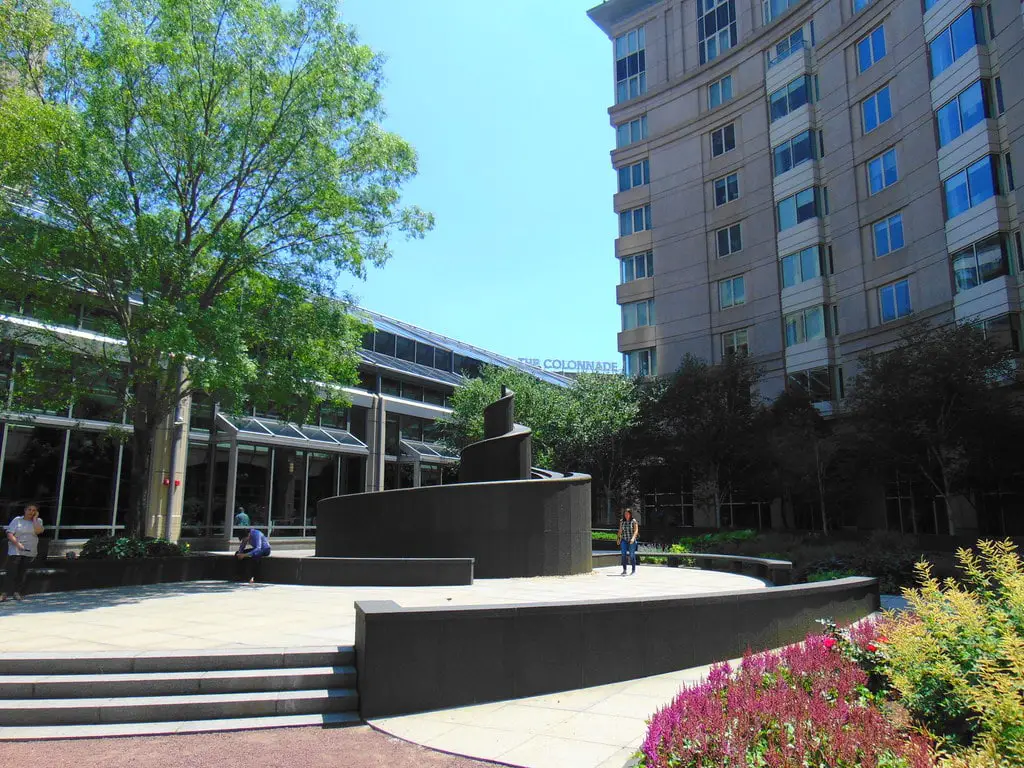
Commercial Office Retention and Anchor Stability
Retail's visible. Office space pays the bills.
In December 2024, law firm Ropes & Gray renewed its lease at the Prudential Tower, holding 413,000 square feet.
That's the largest single-office lease in the building and one of the largest in the city.
They've been based there for years, and the renewal signals they'll stay for several more.
The tower still plays a key role in Boston Properties' leasing strategy.
The complex includes 101 Huntington Avenue, 111 Huntington Avenue, and 888 Boylston Street, each connected through the internal concourse.
That layout allows corporate tenants to mix foot traffic from shoppers, commuters, and hotel guests without needing separate street-level exposure.
It also stabilizes occupancy across cycles. Even when retail turnover quickly increases, the offices are written into longer terms.
Ropes & Gray's lease came at a time when other firms had downsized or relocated.
Instead of giving up space, they kept theirs. That decision doesn't hinge on buzz or press.
It ties back to the tower's infrastructure, the location's transit links, and the sheer utility of 52 stories of vertical lease options.
There's still demand for that kind of space, quiet, elevator-based, badge-in at the lobby, especially when it's already paid for.
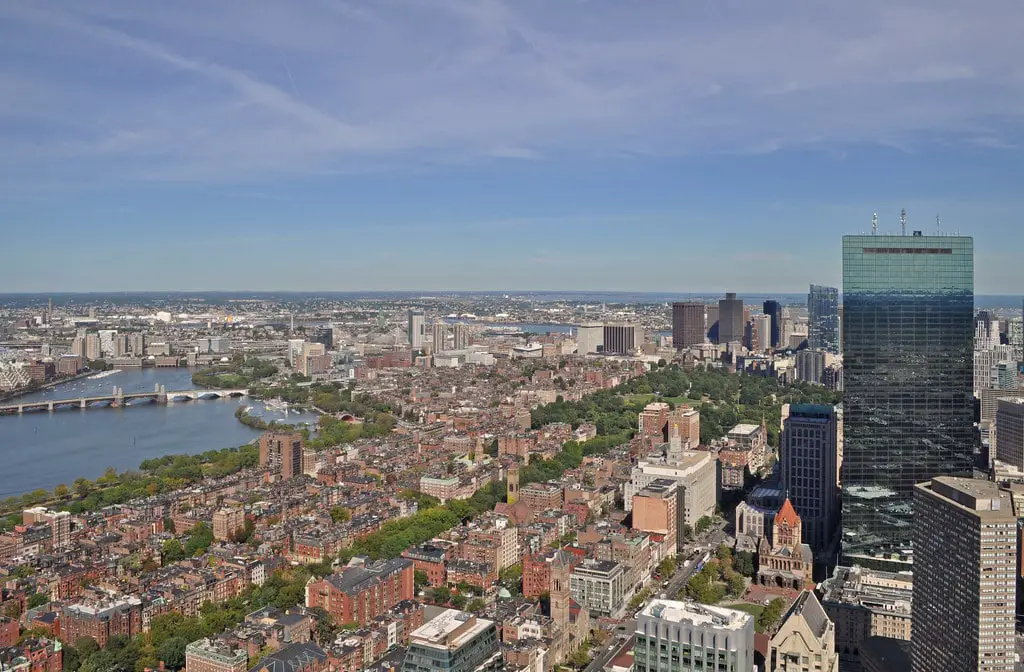
🍀

